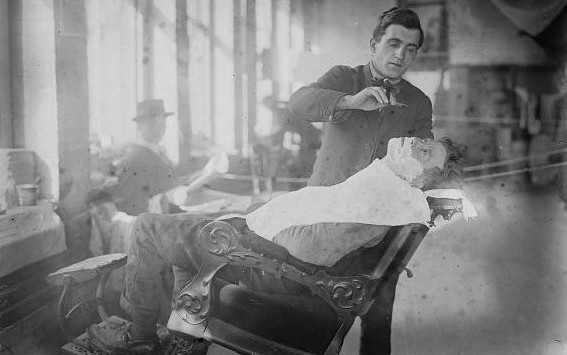THE KING OF SKATS IN SARATOGA PARK (1904)
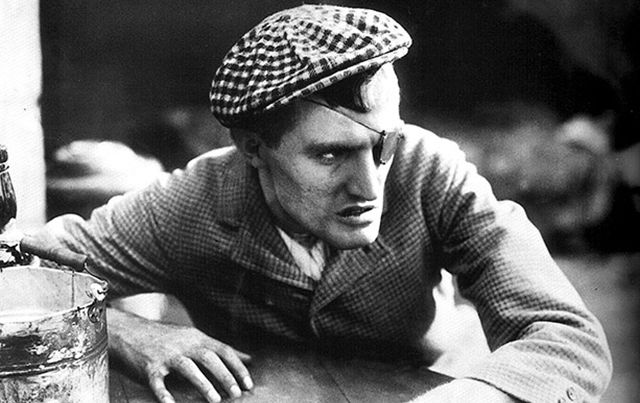
******************************************************************************************************************************** Brownstone Detectives investigates the history of our clients’ homes. The story you are about to read was composed from research conducted in the course of one of those investigations. Do you know the history of YOUR house? ******************************************************************************************************************************** Starting around 1904-1905, Saratoga Park began to develop a sinister reputation, as young men began using it for the purposes of selling illegal narcotics, assaulting park-goers, and simply loafing about and insulting anyone who walked into the park. This was a new phenomenon to the people of the district who did not understand how or why the neighborhood children had begun to disrespect their elders in such a way. One article of the time blamed the parents as much as the boys. They interpreted the occurences as the acts of disaffected sons of respectable families who had little to do with their time, were not forced to take responsibility for their actions, and could not be held chargeable by the police because their parents, who were influential, did not want their sons’ names in the papers: “These young men were night hawks. Sons of respectable, but indulgent, parents, they did about as they liked. They worked always in small groups and gloried in the thought that they could lick any cop which came their way. The groups would assemble on some street corner near the park and use insulting language to girls and women passing.” An indication of what was to come played out in the newspapers between 1905 and 1909, […]
A PROHIBITION WRECK ON ORANGE ST (1922)
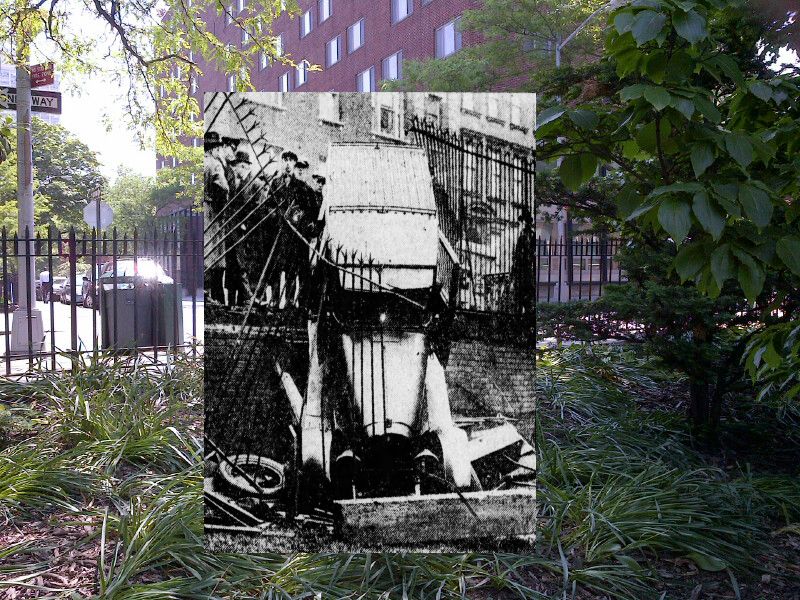
******************************************************************************************************************************** Brownstone Detectives investigates the history of our clients’ homes. The story you are about to read was composed from research conducted in the course of one of those investigations. Do you know the history of YOUR house? ******************************************************************************************************************************** “Tearing through Orange st. with the throttle wide open, in the early hours this morning, a big limousine of expensive make crashed into an electric light pole at the foot of the street, ricocheted against a fire hydrant which it completely demolished, continued on its course and crashed through an eight-foot picket fence.” A flirtation at a dance, a stolen vehicle, a crash, the removal of a set of license plates, and a hasty departure from the scene of the accident was further described in the 12 December 1922 newspaper article. “CRASH WAKENS HEIGHTS” “A blood-stained hand pushed open the door of the limousine. Two gory men stepped out,” wrote the reporter. The two men “then turned and assisted a woman out of the car. They climbed over the wall to the street and stood huddled in a little group as if debating what to do.” After a few minutes of dazed waiting, the three crash victims walked quickly up Orange Street. Then, a few minutes later, one of the men was observed returning and making “a vain effort to wrench the rear license plate from the car.” All that he succeeded in doing, though, was leaving “a number of bloody but well-defined fingerprints on the license number.” A WOMAN APPEARS […]
WAS POT GROWN IN THIS BROOKLYN PARK? (1952)
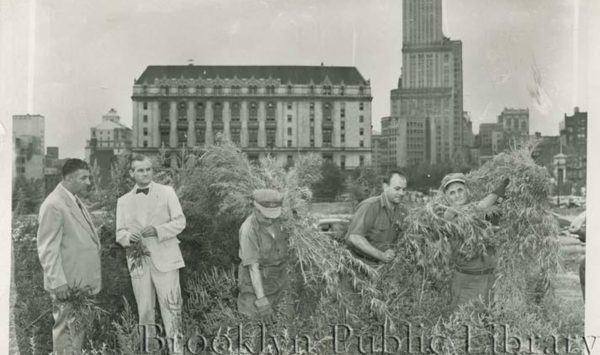
******************************************************************************************************************************** Brownstone Detectives investigates the history of our clients’ homes. The story you are about to read was composed from research conducted in the course of one of those investigations. Do you know the history of YOUR house? ******************************************************************************************************************************** Around the 1920s, Americans began to become aware of “hop.” Known alternatively as “marihuana,” the “loco weed,” “drugged cigarettes,” and a laundry list of other names, the narcotic became the focus of Fed struggles in the ’30s as its use became widespread. Raids were conducted, while drug-crazed citizens went on “1-man riots” because of the drug, and a herd of milk goats grazed on a “5-acre crop” of it at Floyd Bennett Field. In the end, though, the marijuana craze would become a difficult crop to spike. By the 1950s, raids had become an almost daily occurrence, and the City of New York was cooperating with Federal agents as it turned to conducting “operations” of its own to locate and destroy large crops that seemed to be growing just about everywhere in Brooklyn and Queens – mostly on vacant lots. A BROOKLYN PARK GROWS WEED At one point, the City conducted a public campaign with the Sanitation Department and the Police Department at the lead. The police did the locating and the sanitation workers did the destroying. During one raid, in 1952, a rather large marijuana crop seemed to be growing in a wide open park area “in the shadow of the Brooklyn Federal Building, one block north of Tillary St.” […]
The Campfire Girl & The Marxist, Pt. II (1915)
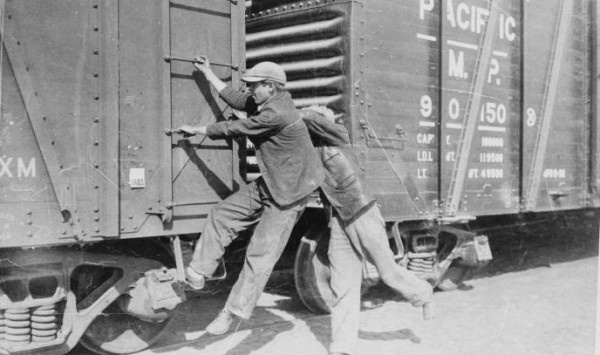
(And now, the thrilling conclusion of – “The Campfire Girl & The Marxist.”) THE ESCAPE PLAN The escape plan seemed so simple in its design that it was later wondered how it ever worked. Although the overall scheme of hopping freight trains headed west was plotted intimately with maps and the help of encyclopedias, the actual disguise plans and methods for eluding authorities was rather, well, sophomoric. But it worked. It seems that Max went down to a store on Fulton street, and there bought for Viola a pair of brown knickerbockers, a Norfolk jacket and a gray cap with a peak on it like a bicycle cap. Viola would look like a boy bicyclist. “He just guessed at the measurements,” said Bostick, adding with a knowing grin, “and I must say Max was a fine guesser.” When Max, Viola, and Andrew arrived at the Kowenhoven station of the Long Island Rail Road – for Andrew was an accomplice in their escape – Max made a suggestion that must have rankled Viola – that, to aid in their escape, she could roll her hair up and hide it under her cap. Viola, however, was having none of that. If she was going to be a boy, she was going to go the distance. She stated firmly that she wanted her curly locks shorn completely. So, there, under the archway of a railroad bridge, Max snipped off six “curls.” He kept three, bound in a handkerchief, and gave three of them […]
The Campfire Girl & The Marxist (1915)
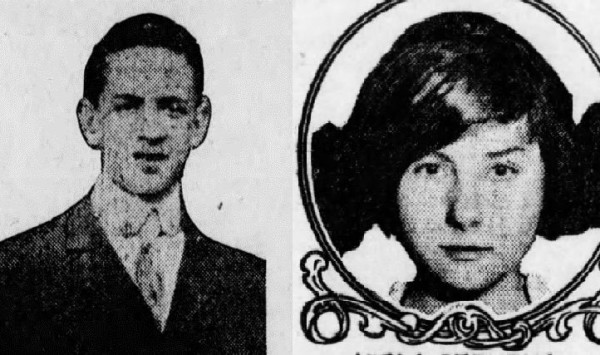
******************************************************************************************************************************** Brownstone Detectives investigates the history of our clients’ homes. The story you are about to read was composed from research conducted in the course of one of those investigations. Do you know the history of YOUR house? ******************************************************************************************************************************** If nature were a fair goddess, she would have made some girls boys and some boys girls. Although most teenagers often go into their young adulthood trying to determine just who they are, some know it instinctively and early on from experiences that leave indelible etchings upon their souls. Viola Stevens was just such a girl. Although she was new to Hancock Street – and a bit serious for her years – she had initially proved herself to be very much like all of the other girls on the block. She loved nature, had boy “friends,” was a Campfire Girl, and had even, after some time, became a Woodcraft Girl. In other words, she spent nearly all of her 15 years doing “girl” things. In 1915, though, all of that changed when she did a very “boy” thing, which terrified her mother and excited the entire borough. She ran away – with a socialist. A MOTHER’S POINT OF VIEW No, of course. The “running away” bit was the actual catastrophe as far as her mother was concerned. The fact that the boy was a socialist simply added some salt to the wound. Any mother would tell you that her daughter is her world and that she is pure as the driven […]
THE HERO OF THE HALSEY STREET FIRE (1911)
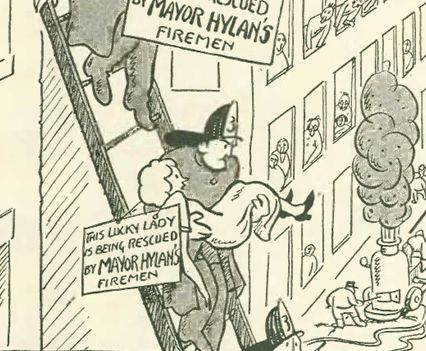
******************************************************************************************************************************** Brownstone Detectives investigates the history of our clients’ homes. The story you are about to read was composed from research conducted in the course of one of those investigations. Do you know the history of YOUR house? ******************************************************************************************************************************** Late in 1911, on a brisk early November morning, a fire broke out in the ground floor store of a 4-story corner apartment building across the street from Saratoga Square Park. It quickly spread, engulfing the entire building. Smoke pouring out of the store on the ground floor of 801 Halsey Street was first seen by a streetcar motorman, William Coffey, who, thinking quickly, began to clang his streetcar gong to arouse the sleeping inhabitants of the building. Coffey and his conductor, along with their six passengers, descended from the car and rushed to the building to do what they could do to assist in evacuating the residents. The fire had apparently started on the ground floor on the Halsey side of the building in a stationery store run by Wolf Bialik. Next door was a grocery store operated by Ernest Seemeyer. The flames then quickly “shot up the dumb waiter shaft to the roof, mushrooming out on each floor.” DETECTIVE O’HARA TO THE RESCUE Across the street, at No. 98 Howard Avenue, a 37-year-old police detective, Irving A. O’Hara, upon hearing the street car gong, had begun dressing quickly and rushed across the street to assist. By this point, the three families living in the building had made it out […]
COULD COLORED MEN PUT OUT FIRES? (1898)
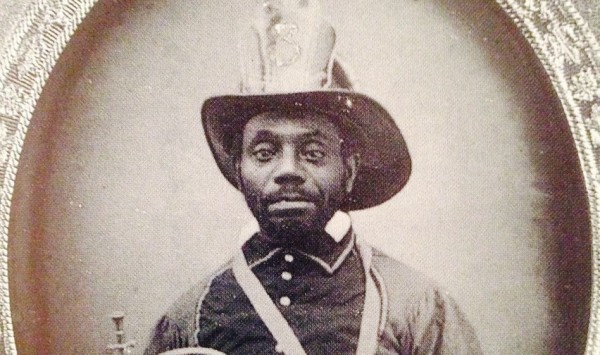
******************************************************************************************************************************** Brownstone Detectives investigates the history of our clients’ homes. The story you are about to read was composed from research conducted in the course of one of those investigations. Do you know the history of YOUR house? ******************************************************************************************************************************** In 1898, a Brooklyn – and New York City – “first” occurred when Fire Commissioner John Jay Scannell assigned the first black man to serve in the Fire Department in Brooklyn. William H. Nicholson, of No. 200 Myrtle Avenue, was a 29-year-old former cement tester who had been born in Virginia. He would become, in a number of ways, the precursor to the many first blacks to be “allowed” to integrate society’s historically “white” institutions in the century to follow. While, in 1891, Wiley G. Overton, another “colored man,” had been the first to be appointed as a patrolman on the Brooklyn police force, Nicholson, as a fireman, was still entering into a conflagration of his own. Patrolman Overton had found his existence on the force to be terminally difficult. Assigned to patrol the Brooklyn “colored district,” he had been transferred around to several precincts because no white officer would sleep in the same dormitory with him. His very presence in every station house had “caused trouble.” Finally, after being subjected to all sorts of “annoyances,” Overton had been “practically hounded from the force” a few years after his appointment. And it was likely that Nicholson knew this. Now, Nicholson had become the Fire Department’s unofficial test case for “colored integration.” […]
